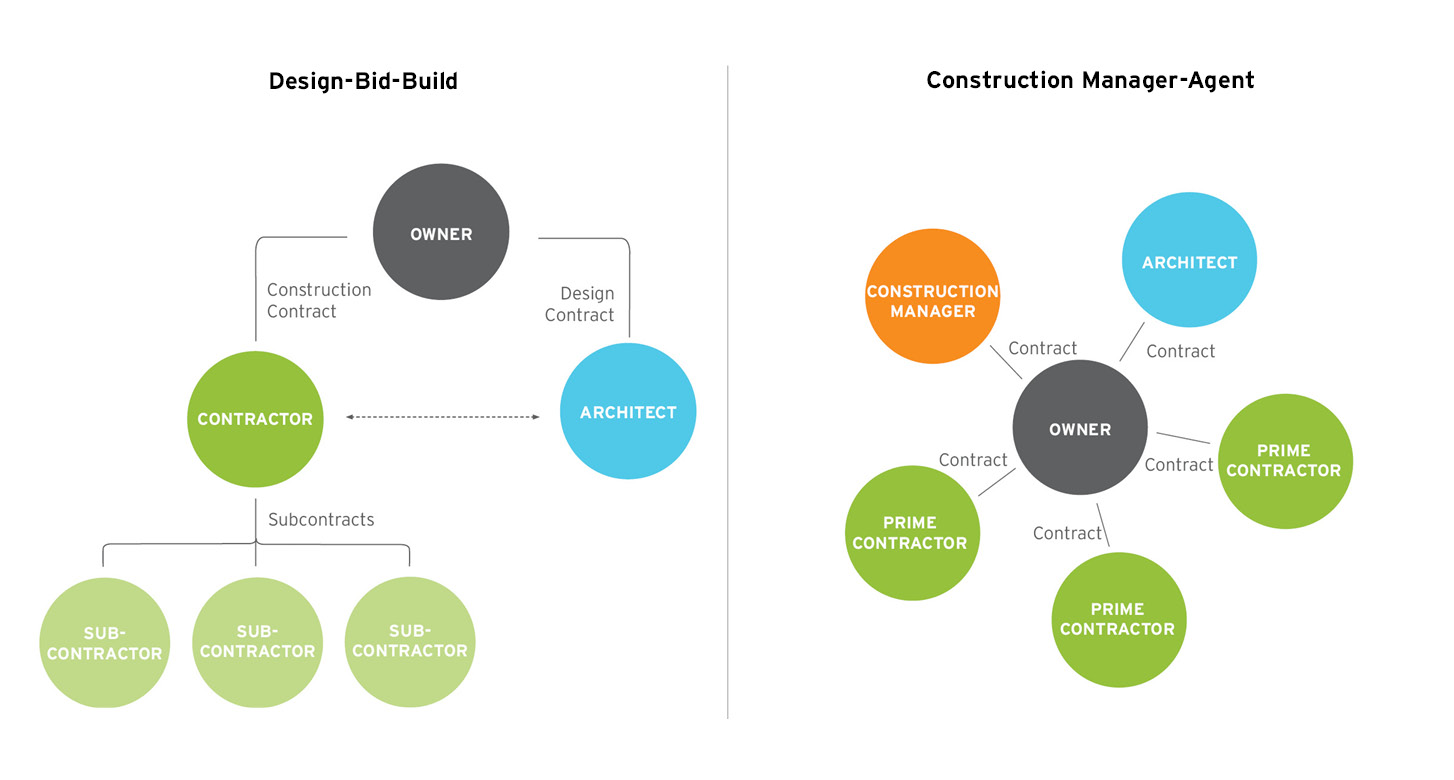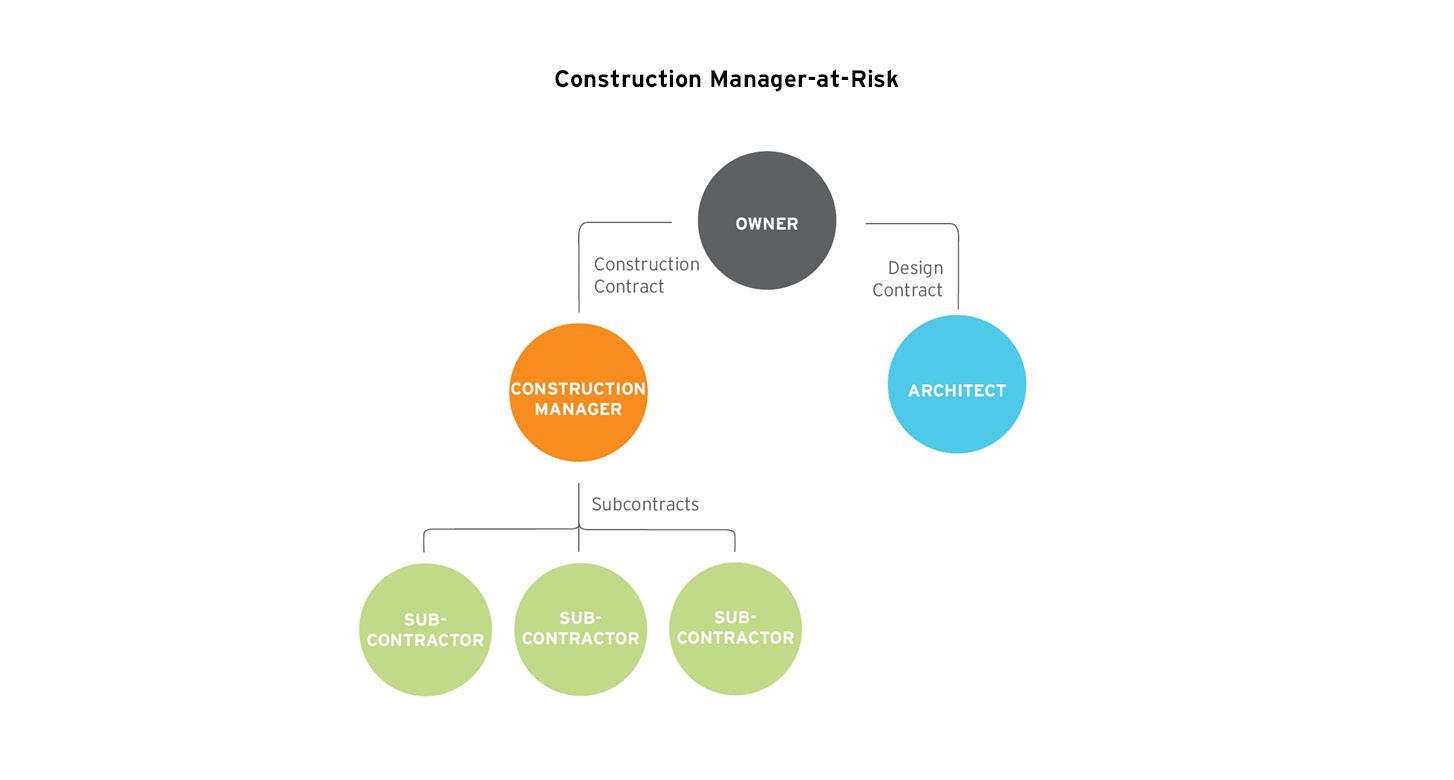Changes to Iowa Bidding Laws: CMAR for Public Projects

A change to Iowa’s bidding laws went into effect in July 2022. Previously, publicly funded projects used a design-bid-build or Construction Manager Agent (CMA) project delivery method. Now, public entities have the option to hire a Construction Manager at-Risk (CMAR).
Although this change is an exciting opportunity for public clients, it presents additional stipulations. Understanding these stipulations and the CMAR process can help you determine if this project delivery method meets your goals.
Since the law went into effect, we’ve been researching and keeping our clients informed of their options. This article will discuss the changes to Iowa’s bidding laws in greater detail and break down the multi-step CMAR process.
Understanding Project Delivery Methods
Design-Bid-Build and Construction Manager Agent (CMA)
Before July 2022, Iowa bidding laws required publicly funded projects to use either a design-bid-build or Construction Manager Agent (CMA) project delivery method.
On a design-bid-build project, the owner hires an architect to complete design work, and after bidding, hires a contractor to complete construction. In theory, this process increases competition and reduces costs since owners select the lowest responsible construction bidder.
With the CMA method, the owner hires a Construction Manager (CM) who joins the design process and provides input on costs, the sequencing of construction, and more.
The CMA also breaks down construction work into smaller bid packages. With each package, the owner selects the lowest responsible bidder—resulting in multiple prime contractors. The owner holds each contract with the CM acting as an adviser.

Construction Manager at-Risk (CMAR)
New Iowa bidding laws allow public entities to use the Construction Manager at-Risk (CMAR) project delivery method. With this method, the owner hires a Construction Manager to oversee the project from design to construction close-out.
The CM administers construction and hires subcontractors through an RFQ and RFP process (more on that later). Unlike the CMA delivery method, the Construction Manager holds all contracts with subcontractors with this delivery method. The owner maintains a contract with the CM, as well as one with the architect.
The CM also provides a Guaranteed Maximum Price (GMP) for the construction. Since the CM could be held financially responsible if the project goes over budget, they must closely manage the budget at all project stages.
In theory, this change to Iowa’s bidding laws should lead to a more responsible use of taxpayer dollars. Although public bidding is known to increase competition, selecting the lowest bidder does not always result in the best value. The approach also works well for complex projects that involve extensive coordination between contractors and other specialists.

The CMAR Process Under Iowa Bidding Laws
The CMAR method can add a degree of complexity to projects. Iowa law requires owners to go through a multi-step process to ensure fairness when hiring a CM and their subcontractors under this method. Due to the complexity of these requirements, it helps to have a dedicated and educated staff to oversee the process.
Below, we’ll provide a high-level overview of the process.
1. Disclose the Intent to Start a GMP Contract
Under Iowa bidding laws, a building owner must first disclose their intent to start a GMP contract. This can be done through a plan room service—a public database that lists bidding documents. The disclosure must be published at least 14 days before the owner issues a Request for Qualifications (RFQ).
2. Issue an RFQ
Next, the owner must issue the RFQ through a relevant plan room service and the owner’s government or association website. CMs should have no less than 13 and no more than 45 days to respond to the request. Once received, an architect can help the owner review the qualifications packages.
3. Issue an RFP
After evaluating the qualifications packages, the owner will send a Request for Proposal (RFP) to the CMs who meet the qualifications. In this document, the owner should ask the CM to provide a fee and discuss how they will interact with the design team. The owner might also want to provide any additional project information that wasn’t provided in the RFQ.
4. Review Proposals
Next, the owner will receive, open, and read aloud the names of the CMs submitting proposals at a public meeting. Late proposals or those that do not conform with the RFP requirements may be rejected.
Within 45 days, the owner must evaluate and rank each proposal using the criteria outlined in the RFP. The owner will need to make this information publicly available to ensure transparency.
After ranking the proposals, the owner can negotiate with the highest-ranked CM. If the owner and the CM are unable to reach an agreement, the owner must end negotiations in writing and move on to the next ranked CM.
5. Issue an RFQ for Subcontractors
As mentioned, the CM holds all contracts with the project’s subcontractors. To hire subcontractors and other specialists, they will need to go through an RFQ and RFP process.
First, they must advertise the RFQ in a relevant contractor plan room and the owner’s website no less than 13 and no more than 45 days before the response date. This document should include general information about the project site, scope, and schedule.
The CM can also set prequalification criteria related to the firm’s experience, the capacity of key personnel, technical competence, performance capability, and proximity to the project’s location.
Successful subcontractors will receive an RFP, while unsuccessful ones will receive an explanation of which criteria were not met.
6. Issue an RFP for Subcontractors
In the sixth and final step, the CM will issue an RFP to all qualifying subcontractors. The due date for the response must be no fewer than 15 days after the CM issues the notice.
With the owner, the CM will open the received proposals and publicly announce the name of the submitting contractor. After the bids have been evaluated and tabulated, the lowest responsible bidder will be awarded.
With this delivery method, the CM can also self-perform some of the construction work. If they go down this route, they will have to notify the owner and submit their bid in the same fashion.
Is the CMAR Method Right for You?
The CMAR method offers many benefits for public projects. For one, hiring is based on qualifications, rather than low bids—reducing some of the risk associated with design-bid-build projects. However, the process of hiring a CM and their subcontractors can be long and complex, adding to your project’s timeline.
Before going down this route, consider the extra time and effort the CMAR method will add to your project. Your architect can provide input on the delivery method and help you determine what is most appropriate for the project’s scope and goals.
If you stick with a traditional public bidding delivery method, it helps to understand the process. Learn more by reading about what you can expect from bidding/negotiation.